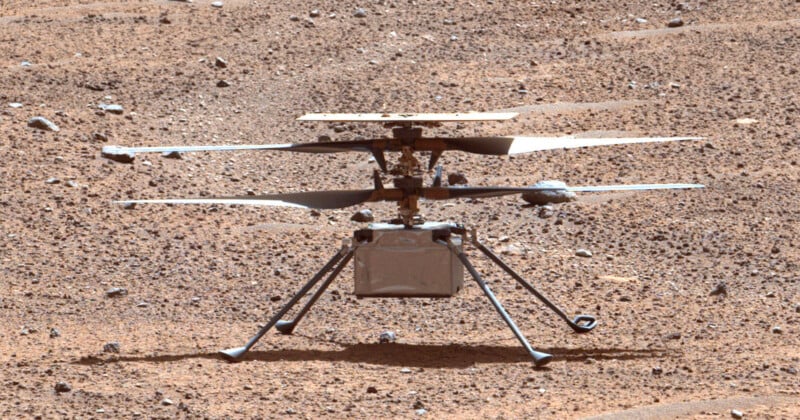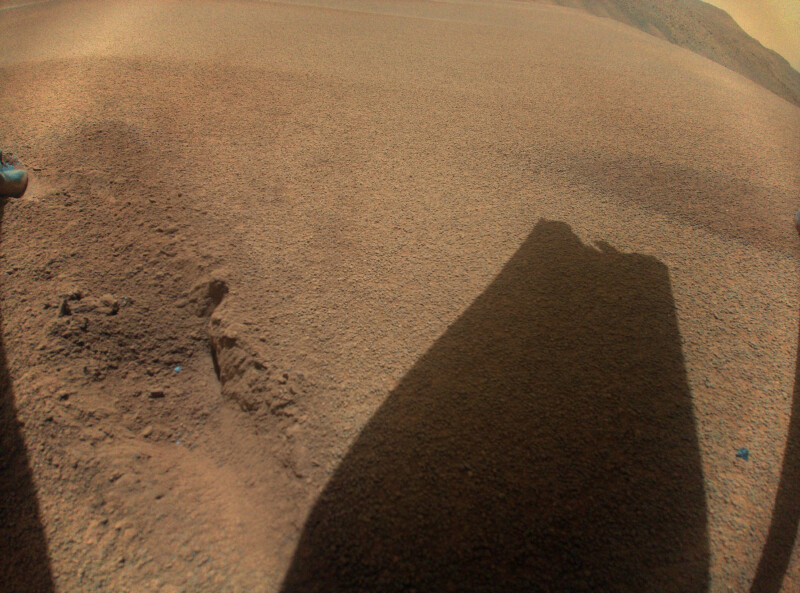After 3 Years, NASA’s Mars Camera Drone Has Made Its Final Flight

After greatly exceeding expectations and making dozens more trips into the Martian sky than planned, NASA’s Ingenuity helicopter drone has made its final flight. Rest now, king.
The Ingenuity helicopter first successfully took to the skies above the Red Planet in April 2021 and for the next three years it would continue to show that NASA was able to take powered, controlled flights on a world other than Earth. After nearly crashing a month later due to a camera glitch, the Ingenuity would recover and regularly send back photos of Mars, ranging from gorgeous sunsets to views of space wreckage from a unique perspective.
But on January 18, after rising to an altitude of 40 feet and then descending to about three feet above the surface, Ingenuity lost contact with the Perseverance rover which serves as the communication relay for the drone. Communications were re-established the next day, but photos of the rotor blade that came a few days later revealed damage — enough to prevent the drone from flying again.

“During the descent phase of Flight 72, on Jan. 18, 2024, Ingenuity experienced an anomalous landing near the right side of this image. Subsequent imaging from the helicopter’s onboard cameras indicated that one of the rotor blades was damaged during touchdown. The team believes that the relatively featureless terrain in this region, which the navigation system was not designed for, was likely the root cause of the anomalous landing,” NASA says.
Ingenuity vastly exceeded expectations. Originally designed to perform five experimental test flights over the course of 30 days, it flew, performed 72 total flights, and flew more than 14 times farther than planned while logging more than two hours of total flight time.
“Over an extended mission that lasted for almost 1,000 Martian days, more than 33 times longer than originally planned, Ingenuity was upgraded with the ability to autonomously choose landing sites in treacherous terrain, dealt with a dead sensor, cleaned itself after dust storms, operated from 48 different airfields, performed three emergency landings, and survived a frigid Martian winter,” NASA says.
The Ingenuity was not made to last through the Martian winter — at least not initially. It was unable to power its heaters through the frigid nights and as a result, the flight computer periodically froze and reset. Called “power brownouts,” NASA redesigned the helicopter’s winter operations in order to keep it flying. This was obviously successful, as the drone survived multiple winters on the Red Planet.

“The historic journey of Ingenuity, the first aircraft on another planet, has come to end,” NASA Administrator Bill Nelson says.
“That remarkable helicopter flew higher and farther than we ever imagined and helped NASA do what we do best — make the impossible, possible. Through missions like Ingenuity, NASA is paving the way for future flight in our solar system and smarter, safer human exploration to Mars and beyond.”